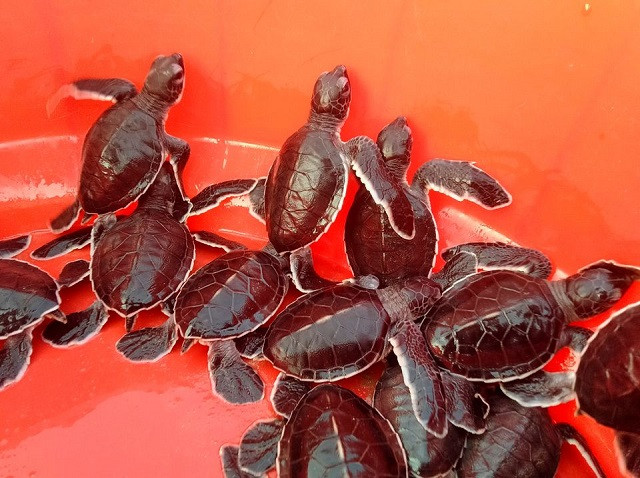
A female turtle lumbers across the beach in the bustling port city of Karachi late at night, looking for a place to lay her eggs.
Waiting for her, staff from Sindh Wildlife watch quietly as the green turtle buries a hundred or more eggs in the sand before heading back out into the Arabian Sea.
Because of to Covid-19 and movement restrictions, beaches around the world have more sparsely inhabited by humans since 2020. Sea turtles have taken the opportunity to return to their birthplaces in large numbers, reclaiming the now less-polluted, serene beaches to lay their eggs during the main September-November breeding season.
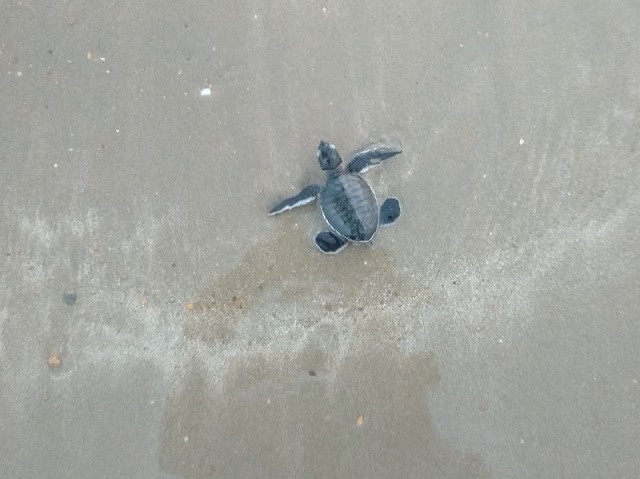
A baby turtle returns to the sea after release in Karachi November 17, 2021.
Green turtles seen on Karachi beaches jumped to 15,000 last year from 8,000-8,500 in 2019, Sindh Wildlife says. Lockdowns ended by the start of this year’s season, but conservation experts still expect a large number of the endangered animals to visit.
Among the largest sea turtles and the only herbivores, adult green turtles can weigh more than 90 kg (200 pounds).
They nest in more than 80 countries and live in tropical and subtropical coastal areas of more than 140. Conservation group Sea Turtle Conservancy says there are 85,000 to 90,000 nesting females worldwide.
The weather in Karachi can be conducive to egg-laying as late as January, and wildlife officials will keep up their vigil until then.
“The turtles have still had an ample egg-laying opportunity during this period. In this season, too, we have had a large number of turtles coming here. The result is that within a period of three months, we have nested around 6,000 eggs so far,” said Ashfaq Ali Memon, who is in charge of Sindh Wildlife’s Marine Turtle Unit.
As soon as the mother turtle leaves, staff hurry to dig out the eggs and move them to a three-foot (1-metre) deep pit in a hatchery until the babies hatch, 40-45 days later. The hatchlings are taken to the beach immediately and released into the sea.
The Sindh turtle unit has released 860,000 turtle babies into the Arabian Sea since being set up in 1970. Memon said 900 have been released so far this season.
Conservationists say that in the past, sea turtle populations were threatened by demand for their fat, meat and eggs, but in recent years loss of habitat due to pollution and land reclamation have also taken their toll.
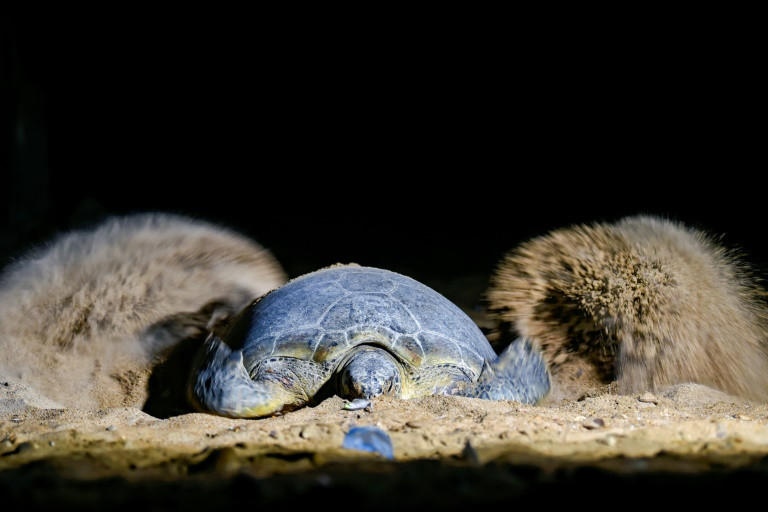
“Being human doesn’t only call for loving another human being. These animals also require the same attention and love,” said Ashfaq Ali Memon, the head of marine wildlife at Sindh province’s Wildlife Department.
Sandspit Beach is a beloved recreation spot for the city’s 22 million residents, as well as a critical habitat for Pakistan’s endangered green turtles.
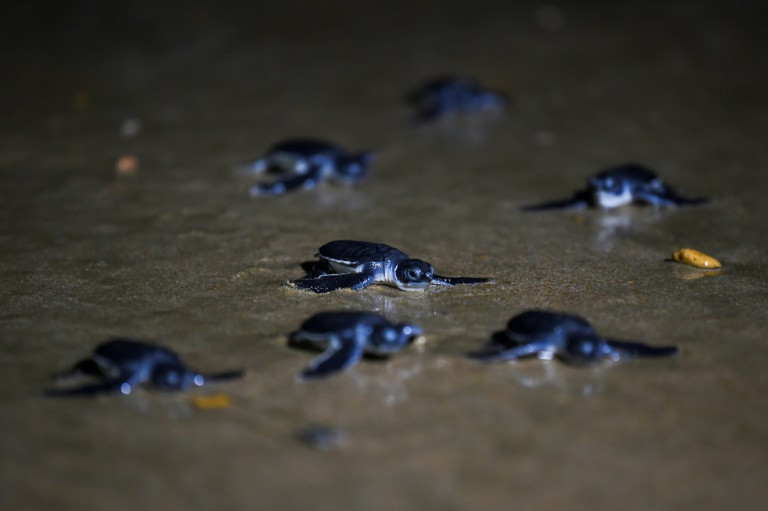
Newly-hatched green turtles crawl towards the Arabian Sea, after being released by marine conservationists on Sandspit beach in Karachi.
Six conservationists tasked with protecting the last surviving turtle species to nest in Pakistan stand guard nearby.
The eight-kilometre (five-mile) stretch of beach is being relentlessly encroached upon by the construction of concrete beach houses that have, metre-by-metre, eaten into the strip of sand where turtles nest
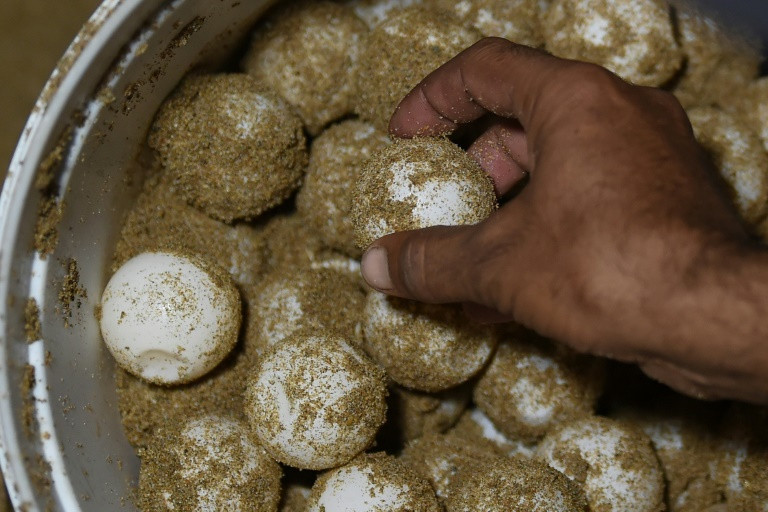
Until the early 2000s, the beaches of Pakistan’s Arabian coast were the nesting habitat for five endangered turtle species, now only the green turtles come to shore to lay their eggs. PHOTO: AFP
.”Once I saw someone disturbing a turtle while she was laying eggs. She ran off for safety, leaving a trail of eggs behind her. That was a very painful scene,” said Haseen Bano, Memon’s wife who supports the work of the volunteers.
Marine turtles have covered vast distances across the world’s oceans for more than 100 million years but human activity has tipped the scales against the survival of these ancient creatures, the World Wildlife Fund says.
Until the early 2000s, the beaches of Pakistan’s Arabian coast were the nesting habitat for five endangered turtle species.
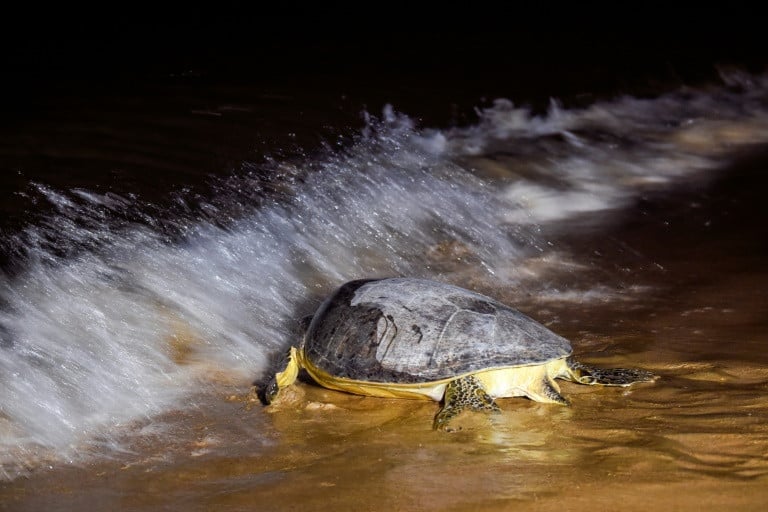
Marine turtles have covered vast distances across the world’s oceans for more than 100 million years but human activity has tipped the scales against the survival of these ancient creatures, the World Wildlife Fund says.
Now only the green turtles come to shore to lay their eggs on just two beaches in Karachi and on uninhabited islands in Balochistan, further down the coast towards Iran.
Alongside construction, noise and garbage pollution, WWF-Pakistan has also reported that diesel and petrol fumes have caused deformities in hatchlings.
As well as major disruption to their nesting habitats, thousands of turtles are also injured or killed in fishing nets every year.
Named for the greenish color of their cartilage and fat, they are classified as endangered across the world.
Sindh Wildlife Department has a dedicated team of six volunteers, paid according to fluctuating donations, who patrol the beaches after dark during nesting season between August and January.
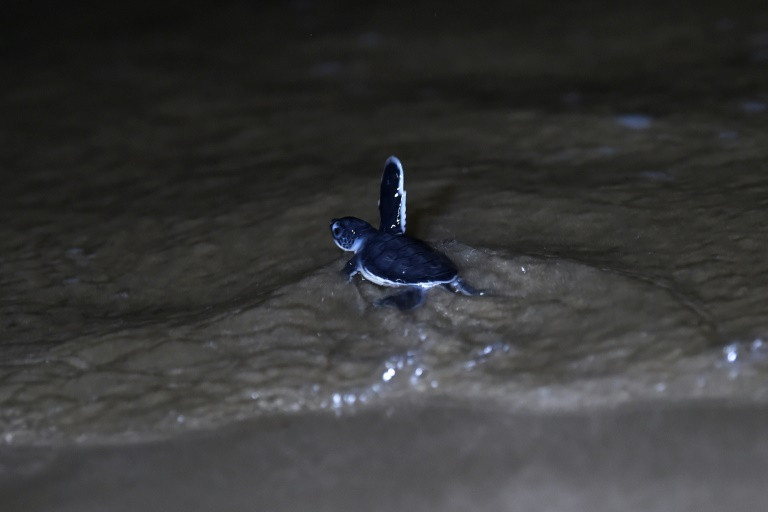
Data on the number of green turtles is not available in Pakistan but, for the past few years, the number of hatchlings has increased.
The 88 — a decent batch for a young female — were delicately collected the same night and taken to a protected coastal conservation centre and reburied in the sand for the 45-60 day hatching cycle, away from the danger of stray dogs, mongoose and snakes.
Baby turtles just a few hours old and only about two inches long are meanwhile brought to the water’s edge in buckets by volunteers and released one-by-one, swimming off into the night.
Data on the number of green turtles is not available in Pakistan but, for the past few years, the number of hatchlings has increased.
In 2022, volunteers successfully hatched 30,000 eggs and the current year’s count has already passed 25,000 just over halfway through the season.
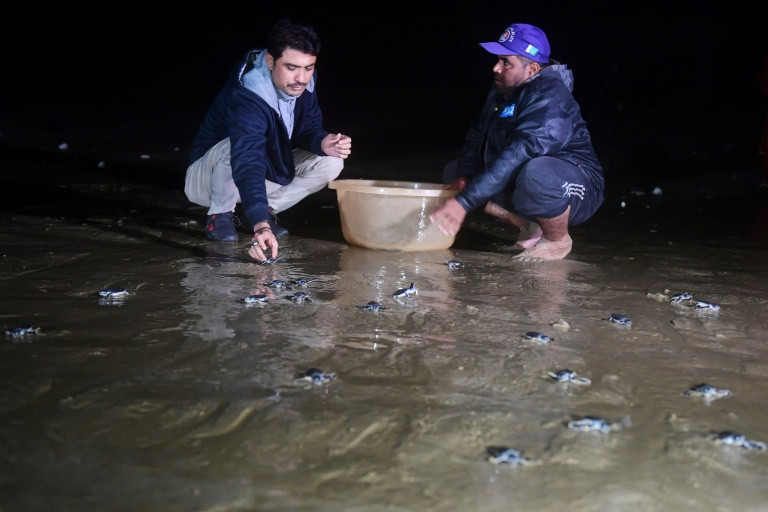
Baby turtles just a few hours old and only about two inches long are brought to the water’s edge in buckets by volunteers and released one-by-one, swimming off into the night.
These “living dinosaurs” will continue to struggle against the accelerating urban sprawl of Karachi and the dangers posed by fishermen.
It feels good to take care of these turtles, they boost the beauty of our beach.
